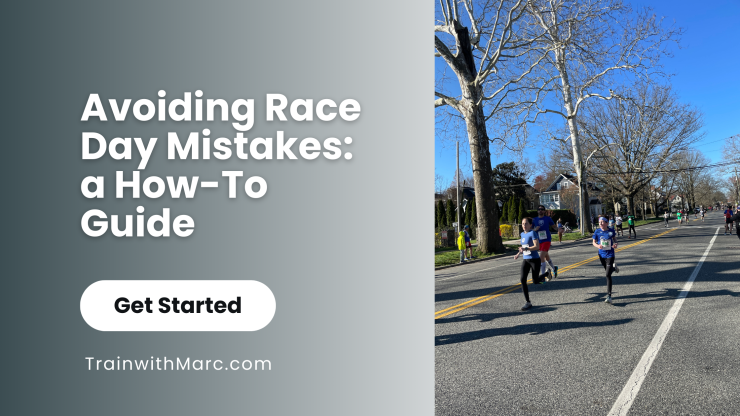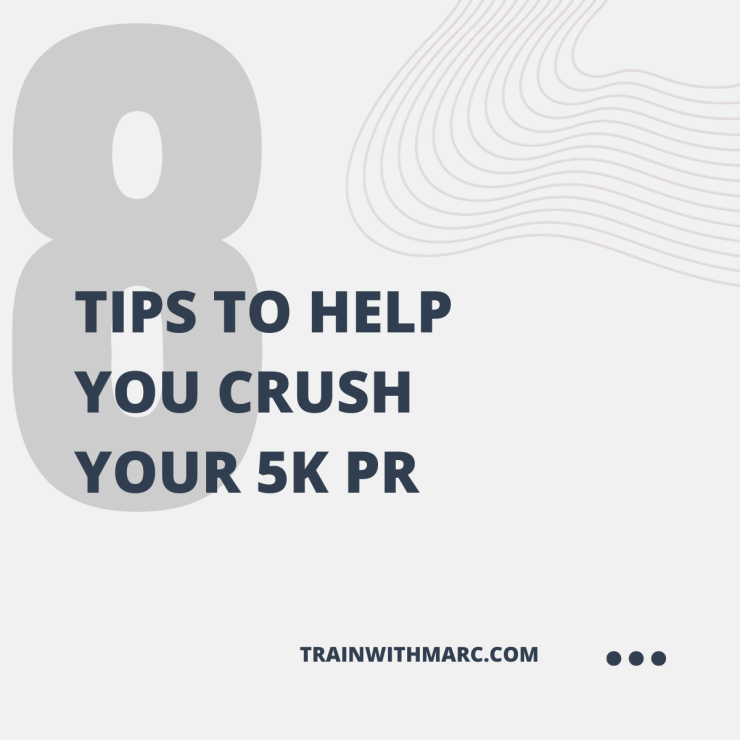How can you improve your running speed? By increasing your stride length or increasing your stride frequency
To run faster, we have some options. We can run down hill and have our legs fly out from under us.
I don’t advise we do this often, though.

Instead of recklessly running fast, we can improve our stride rate through drills and practice. Your stride rate is a combination of the distance between foot strikes (stride length) and how often we take those steps (stride frequency). To really understand stride rate and how it can help us run faster, there are some terms we should dig into:
Stride Length: stride length is the distance between foot strikes. Often, it’s measured from a foot’s take off, back to when it lands. Newer Garmin watches can tell you what your stride rate is. It’s in the details of your run and you’ll find it under “cadence”. It’s measured in steps per minute (spm). The higher the number, the more steps you take per minute. Typically, any run over 150-160 steps is pretty efficient.

Stride Frequency: stride frequency is how often (foot strikes per distance) your feet are coming in contact with the ground. You’ll want to make sure that your stride is long, but not too long as a really long stride will result in you over striding and heel striking. Similarly, you do not want to be on the ground for any longer than you should be. You’ll want to make sure you are landing lightly and getting your foot quickly off the ground. Not sure if you’re doing this? A gait analysis can help determine whether your running form needs some tweaking. As a side note, the longer your foot is in contact with ground though, the slower your stride rate will be.
Disclosure: There also may be affiliate links present – which means if you buy something with that link, I make a small commission.
Stride Rate: stride rate is measured by multiplying the stride length (distance) by how often you’re coming in contact with the ground (time). The result is a rate (fraction) of feet per second. Garmin watches, like my Garmin 235 for example, tells me strides per minute.
These two factors, stride length and stride frequency make up a runner’s stride rate. To speed up on a run or during a race, one of these two factors has to increase: we must either take more steps in the same amount of distance or we must lengthen our stride.
Today, I’ll be providing tips to improve stride length, stride frequency and ultimately stride rate.

Tips to Improve Stride Length
A runner’s stride length is usually measured in meters. For example, my Garmin tells me that my stride length is 1.3 meters. As we get in better shape, our stride length will gradually improve, if ever so slightly.
To improve our stride length, we nee to be as strong as possible. Our glutes, hamstrings, quads and hip flexors all play a major roll in driving us forward. When they are strong and working together, we are able to extend with a full range of motion and get the most out of each push off. To put it simply, when you’re strong, you’re fast. Strength training is a major component to getting strong. Make sure you are varying what you do and when you do it to find the best results. Stronger muscles, joints, and ligaments can assist in providing power and coordination that will lengthen your stride.
Core work is essential to running efficiency and this includes stride length. Engaged core muscles assist in lengthening our stride. Doing a weekly session of core work will assist in lengthening our stride. I have a routine that I’ve been using for decades now and while I adjust the workout slightly, the foundation it has given me is invaluable.
In summary, stride length is the distance between steps and while being a stronger runner definitely helps, focusing on improving your stride frequency will ultimately improve your stride rate. In order to really make any changes to your stride length, you have to practice proper running form and also get stronger. Running drills can be a game-changer for those that do not currently do them. Remember, you really only need to focus on one of the two to improve your stride rate.
Tips to Improve Stride Frequency
One of the most important things to know [or remember] about working on your stride is that you always have to be thinking about it. As a runner, it pays to be efficient: being efficient requires less energy to do the same amount of work, so we can either run faster or run longer.

Here are some drills you can do to improve your stride frequency. You’ll want to look them up if you don’t know what they are. Most of them, however, can be found in this blog post:
- Quick feet
- High knees
- Fast arms
- A-walk
- A-skip
- Walks and skips over mini (banana) hurdles
- Practice running tall
- Striders after your run
Do you want more about warm up routines? Check out these articles:
-

Common Mistakes to Avoid On Race Day
-

The Road to Becoming a Middle School Distance Runner
-

Ready for a 5k PR? Here’s Your Race Day Checklist
Running form drills [coach Pelerin prescribes these prior to runs and especially before a workout or race] reinforce proper running technique that becomes second nature. These include A skip, B skip, high knees, and glute kicks.
Again, stride frequency is getting your foot from the ground, through its cycle and back to the ground. The faster and more efficient you are at doing this, the speedier you will be.
Summary
In order to have a faster stride rate, we need to work on two facets of running stride: stride length and stride frequency. Improving our stride length can be attained by becoming a stronger runner and by logging more mileage. As we get stronger and fitter, our stride lengths increase. To improve stride frequency, we must practice running drills that reinforce proper mechanics. By doing so, we are sending neuromuscular signals to our legs that improve our efficiency.
All told, improving our stride length OR our stride frequency will create a net positive and effect our stride rate. This will result in a speedier, more efficient runner.
Thanks for reading until the end! Ready for more?
Links to articles I’ve found useful on this topic:
- Plyo drills for runners
- Speed training for distance runners
- Glute strength
- Core workout
- Improving running form
Want in on my Newsletter?
Looking for some running resources?
Did you find this article helpful? Let me know by leaving a comment below or join the conversation on Twitter, Instagram or Facebook.
Find me on social media!
Searching for a running coach? TrainwithMarc has flexible schedules, dynamic plans, and access to a coach who’s worked with every type of runner.
TrainwithMarc will design a training plan based on your needs, running history, and your goals.
Gear I Love

My Favorite RUNNING gear from Amazon ⬇️
Feetures socks: https://amzn.to/36gNRjU
Tifosi Sunglasses: https://amzn.to/349OuJx
Garmin 235: https://amzn.to/2YgXJ9M
Garmin heart rate monitor: https://amzn.to/2JUun8a

Current Running Shoes ⬇️
Brooks Levitate: https://amzn.to/2GazmUh
Brooks Revel: https://amzn.to/3ndnwcO
Nike Pegasus: https://amzn.to/36htGlX

Running Recovery Gear I use daily from Amazon ⬇️
Sonic X Percussion Massage Gun: https://amzn.to/2S87qTt
Foam Roller: https://amzn.to/2MzrAly
CEP Compression socks: https://amzn.to/30gZLGY

TrainwithMarc’s Social Media links ⬇️
Website: trainwithmarc.com
Instagram: @TrainwithMarc_LLC
Twitter: @marcpelerin
Facebook: @TrainWithMarc
TikTok: @Run_Coach_Marc
Venmo: @marcpelerin















After a run analysis last year, I tried to increase my cadence and take smaller steps. It’s really hard to change after so many years!
LikeLike
I think that improving my stride length would really help me on my long runs. It’s probably time for me to do another run analysis – thanks for the reminder!
LikeLike
For a while, I was really working on increasing my cadence. I found it interesting that I automatically was running faster. I should do that again! 🙂
LikeLike
Great tips-I definitely need to work on both. I am as slow as molasses!
LikeLike
I am 5’9, and all my length is via my legs…hence, I have a very long stride. I have tried increasing my cadence, and it’s really tough moving these long legs faster than what feels comfortable.
LikeLike
I’d be curious to see where your hips are in relation to when your foot lands. Are you more like / | or \ if you’re running in 🏃🏼♀️ direction.
LikeLike
Thanks for the tips, Marc! Super informative. Best of luck on your upcoming races.
LikeLike
I didn’t realize that core work could help with stride length. I’ll also need to see if my garmin measures stride length. Great info!
LikeLike
I’ve been working with my running coach on increasing my cadence – it’s been an interesting process and I’m seeing improvement in my overall pacing.
LikeLike
That’s great! What kind of exercises/drills are you doing to help?
LikeLike
Yes, core does wonders! Your core keeps your body level, upright, and, not to mention, our core is the powerhouse of our body. So when it’s strong, we’re strong. After you do a run, check History –> Activities –> then a run. Find the details and it says Cadence.
LikeLike
Thanks Dominque!
LikeLike
Slow is relative. I’d suggest so high knees, glute kicks and marching. These will tell your body you want high, strong knee drive and less back kick. Plus, try and think of the ground as hot lava – this will help you spend less time on the ground.
LikeLike
Yes, yes. You should. It’s not about being Usain Bolt fast, just fast and efficient for what you’re trying to run.
LikeLike
Definitely is. If you don’t have someone you go to do an analysis, I do them.
LikeLike
It is hard to change, but practicing what you want to do prior to heading out to run helps a lot. I’d suggest quick feet and marching to start.
LikeLike